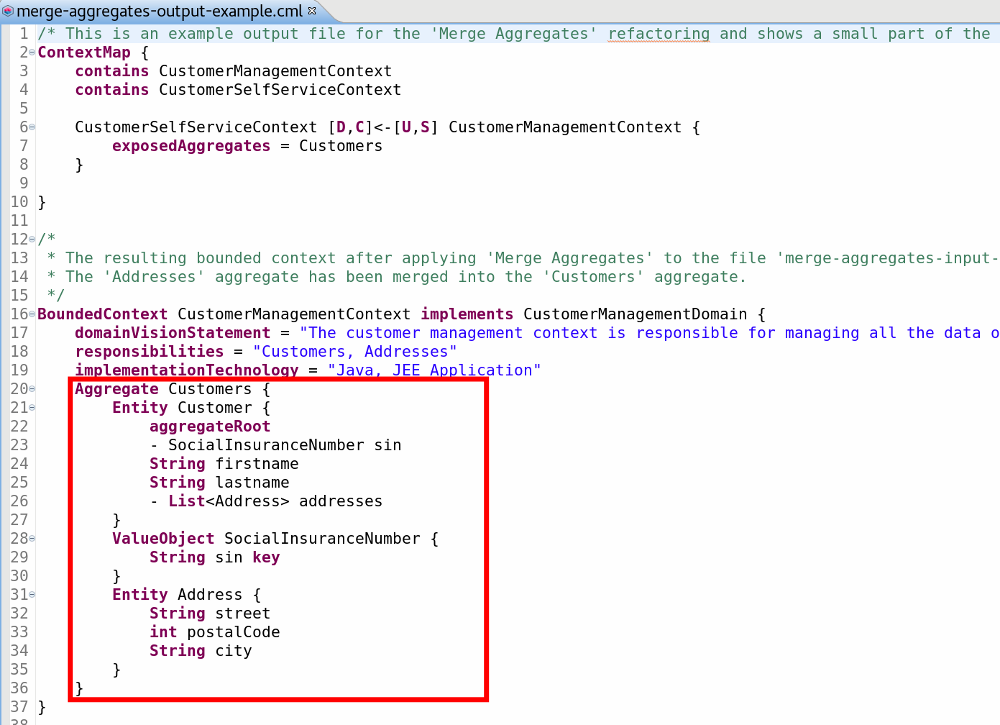AR-6: Merge Aggregates
Merges two aggregates within a bounded context together to one aggregate.
Context & Rationales
On the level of entities we typically try to group attributes or nanoentities in the terminology of ServiceCutter together, which belong to the same identity and share a common lifecycle. Thereby we aim to reduce the coupling between the entities and increase the cohesion within the entities.
- See also: Coupling criterion Identity and Lifecycle Commonality of ServiceCutter.
The same approach can be applied on the aggregate level. The aggregates within one bounded context shall be structured in a way which reduces coupling between the aggregates and increases the cohesion within them.
During the evolution of your bounded context you may find multiple aggregates containing entities which belong together (for example because they share a common lifecycle) and merging the aggregates together improves coupling and cohesion.
Goal
This Architectural Refactoring (AR) merges two aggregates in a bounded context together into one aggregate. It can be applied in a situation where the entities in the two aggregates somehow belong together and a merge of the aggregates improves the coupling and cohesion.
Notes:
- This AR is not applicable if the two aggregates contain domain objects (such as Entities or Value Objects) with the same name, since duplicate names within the same aggregate are not allowed. An application of the AR in such a case would lead to an erroneous result.
- The AR merges all aggregate attributes (such as responsibilities, useCases, etc.) which are possible
to merge. However, there are still attributes which cannot be merged, such as the name or the knowledgeLevel.
- All attributes which cannot be merged are taken from the first aggregate (by default) selected in the dialog (see screenshot below).
- You have to use the corresponding checkbox on the input dialog, if you want to take the attributes from the second aggregate.
Inverse AR’s:
Preconditions
- Your bounded context must contain at least two aggregates which can be merged.
- The two aggregates are not allowed to contain domain objects, such as entities or value objects, with the same name. This would lead to duplicate names in the resulting aggregate.
Input
- Two aggregates which belong to the same bounded context.
Output
- One aggregate containing all objects (entities, value objects, etc.) of the two input aggregates.
Example
The following example illustrates how this AR can be applied. The corresponding sources can be found in our examples repository.
Input
The following bounded context contains two aggregates. The AR is available on both of these aggregates:
Selection Dialog
After triggering this refactoring, a dialog pops up on which you can choose with which other aggregate you want to merge:
Result
The resulting bounded context contains only one aggregate containing all entities of the previously selected aggregates:
Example Sources
- You can find the CML sources for this AR example here.


